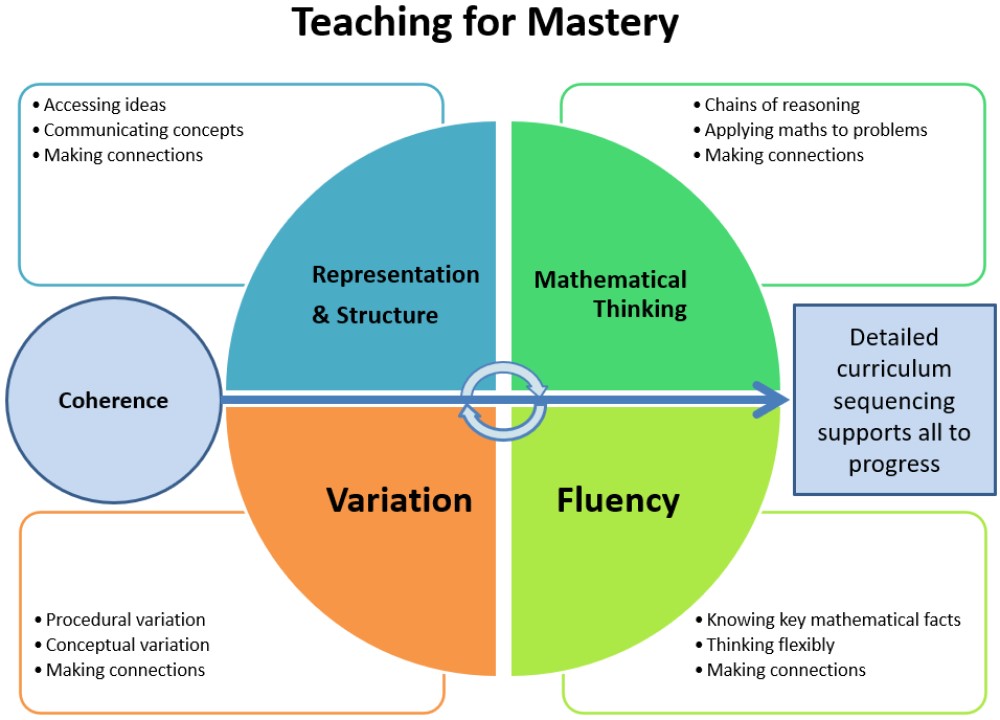Maths
Intent
The 2014 National Curriculum for Maths aims to ensure that all children:
- become fluent in the fundamentals of mathematics
- are able to reason mathematically
- can solve problems by applying mathematics
At St Martin’s, these skills are embedded within maths lessons and are developed consistently over time. We are committed to ensuring that children are able to recognise the importance of maths in the wider world and that they are also able to use their mathematical skills and knowledge confidently in their lives in a range of different contexts. We want all children to enjoy mathematics, to experience success in the subject and to be able to reason mathematically. We are committed to developing children’s curiosity about the subject, as well as an appreciation of the beauty and power of mathematics.
Implementation
At St Martin’s, maths is taught daily, following the White Rose planning framework. This ensures rigorous coverage of all areas of the curriculum and allows children to both develop the fundamentals of maths and to practise applying learnt skills to a range of problems. Teachers use White Rose as a guide to their planning, adapting it to ensure that lessons are pitched and matched to the needs of their class. At St Martin's, we pride ourselves on being able to break learning down into small, managable steps, to make sure that children have the chance to fully understand and practise a mathematical context.
In EYFS and KS1, children engage in a mastering number session four times a week. This is designed to secure firm foundations in the development of good number sense for all children. The aim over time is that children will leave KS1 with fluency in calculation, a confidence and flexibility with number and the firm foundations needed for later work in maths. Here is a video explaining more about mastering number - https://vimeo.com/718208696.
Teachers’ understanding of maths is supported by our School Calculation Policy, which has been adapted to ensure clear progression in the four key areas of calculating. At St Martin’s we know it is important to secure children's number understanding before moving children on to formal methods of calculating and so you may see children using a variety of informal methods to calculate, which you can find within our Calculation Policy Documents. These policies can be found at the bottom of this page.
Teaching for mastery
We beleve in a teaching for mastery approach, which aims to support all pupils to achieve deep understanding and competence across the maths curriculum. Therefore, teachers will organise their classrooms and plan their lessons so that their pupils can go on the journey of mathematics mastery together. Manipulatives and representations are used to support children to gain the understanding they need and there will be opportunities for children to think mathematically in every lesson. There are 5 key areas within teaching for mastery (mathematical thinking, coherence, representation and structure, fluency and variation) and these are explained below.

Maths Manipulatives |
|
 |
Whilst your child will use many different resources in maths, the following three are key across the school: Cuisenaire RodsCuisenaire Rods allow children to explore the relationship between rods, without ascribing each rod a value. The use of the rods enables early understanding of number eg greater than less than; double and half; three times bigger; it also allows an understanding of algebra from an early age where children are happy to replace a letter for a digit eg Orange (O) is double Yellow (Y) – perhaps written as Y x 2 = O or Y + Y = O. |
NumiconNumicon allows children to see the one more one less value of consecutive numbers; the odd/even pattern is obvious; the tiles can be overlaid so children can explore how many 2s are in 7 and the remainder can be easily seen. Numicon also allows exploration of equivalence further up the school where children can explore the relationship between halving and doubling in multiplication. |
|
 |
DiennesChildren across the school use this image to support their understanding of our number system, exploring the multiplicative relationship between each place value – 1s, 10s, 100s, etc. Base 10 is valuable in giving children a sense of the size of a number so that where a number has identical digits eg 222, children understand that each 2 has a different value depending on the place it holds in the number. |
Our teachers are well equipped to design challenges to stretch children's mathematical thinking. In addition, we also use activities from Nrich, I See Maths and NCETM mastery alongside problem solving activities from White Rose. When children struggle, we have support staff trained in maths interventions like Counting to Calculate and Number Stacks, which help to secure the core understanding of number needed to be able to develop more mathematical understanding. Furthermore, when starting a new unit of maths, teachers will consult the Ready to Progress Criteria for that unit and assess children on the crucial objectives from their previous year. Any gaps can then be filled before new learning takes place.
To support children with fluency, KS1 children engage with Numbots at home and at school and KS2 children are encouraged to spend time on TT Rockstars to improve their accuracy with times tables.
Impact
The majority of children at St Martin's enjoy maths. As children progress through our school, they become confident problem solvers and independent mathematical thinkers. Children at St Martin's demonstrate a growth mindset and secondary schools report back that they have a secure grasp of mathematics when they join them.

